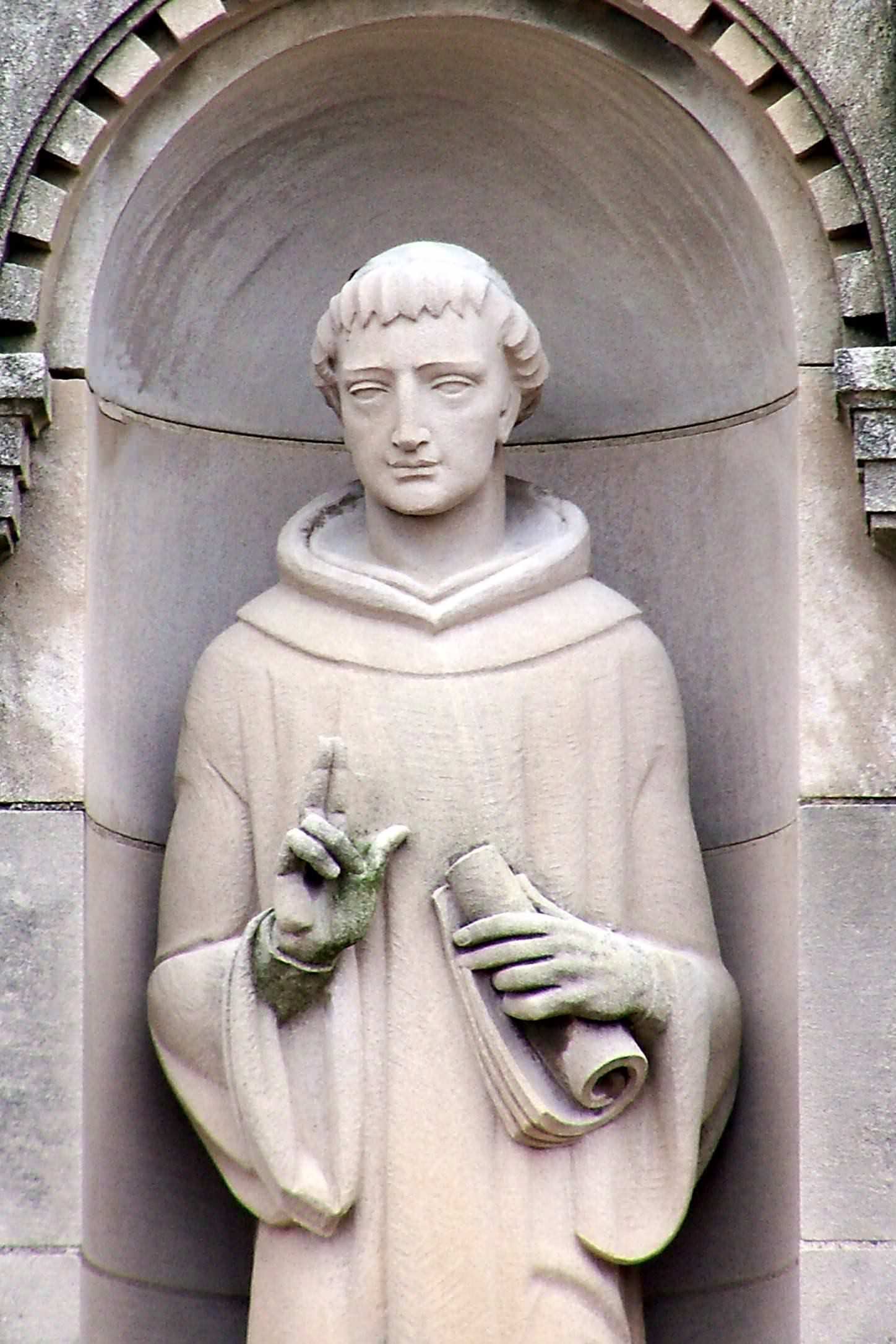
Our Patron
St. Bede the Venerable
Monk, Priest, Scholar
St. Bede the Venerable: Monk, Priest, Scholar
What we know about St. Bede is based chiefly upon his own writings, especially the brief biographical note that he appended to his best-known work: The Ecclesiastical History of the English People.
A descendant of the Anglo-Saxon invaders of England, he was born in 673 in the kingdom of Northumbria in the north of England. At the age of seven, his parents gave him to the monastery of Wearmouth, which had been founded nearby in 674 by St. Benedict Biscop and his associate Coelfrid, and he spent the rest of his life there and in the adjacent twin monastery of Jarrow that was added in 682. Although he seems never to have traveled elsewhere, except perhaps for some short trips within Northumbria, he became the greatest scholar of his age. He was ordained a deacon at the age of 19 and a priest at 30.
Christianity was making headway in England in the seventh century because of the work of two groups of missionary monks: the Irish, whose chief centers were Iona and Lindisfarne, and the Roman mission that had been sent by Pope Gregory the Great in 596 and radiated outward from Canterbury. Benedict Biscop was a partisan of the Roman observance, which eventually prevailed in England, and he made several trips to Rome to bring back books, works of art, and teachers who could instruct his monks in Roman liturgical and monastic observances, including the Benedictine rule. Thus Bede received all of his education in the monastery and became a teacher to the other monks and, through his writings, to the later Middle Ages. He was the brightest star in the firmament of the Northumbrian golden age.
Today Bede is known chiefly as an historian and biographer for his book on the lives of the abbots of his own monasteries, for two lives of St. Cuthbert, one in prose and one in verse, and especially for his Ecclesiastical History of the English People, our principal source for the early history of England. He gathered information carefully from reliable sources, disclosed his authorities to his readers, and made a responsible effort to separate genuine facts from mere legend and hearsay. He was the first writer who consistently dated events from the year of our Lord’s incarnation.
His reputation in the Middle Ages, however, was based principally upon his work as a biblical commentator and homilist. His expositions closely followed the exegesis of the great Latin Fathers, with whose works he was very familiar, but he also added his own observations. He wrote commentaries on the gospels of Mark and Luke, on the Acts of the Apostles, Revelation, and the Catholic epistles. In the Old Testament he expounded Samuel and Kings, Ezra and Nehemiah, Tobit, Proverbs, and the Canticle, and parts of Genesis and Exodus.
Bede was also interested in literary and scientific questions. He wrote books on orthography and versification and on the calculation of time, which was important for determining the date of Easter. He was the author of a martyrology and a cosmography, as well as of some poetry and letters. All of these works were composed in Latin, but he was also at home in his native language, and on his deathbed he completed a translation of the Gospel according to John into Anglo-Saxon.
Bede died peacefully in his monastery in 735, leaving a legacy of learning and holiness that was much appreciated by his contemporaries and successors. But within a few decades the Danish invasions began, and his beloved monasteries were sacked and destroyed. His body was later moved for safekeeping and is now enshrined in a tomb in the cathedral of Durham. His feast is celebrated on May 25. In 1899 Pope Leo XIII declared him a doctor of the Church.
